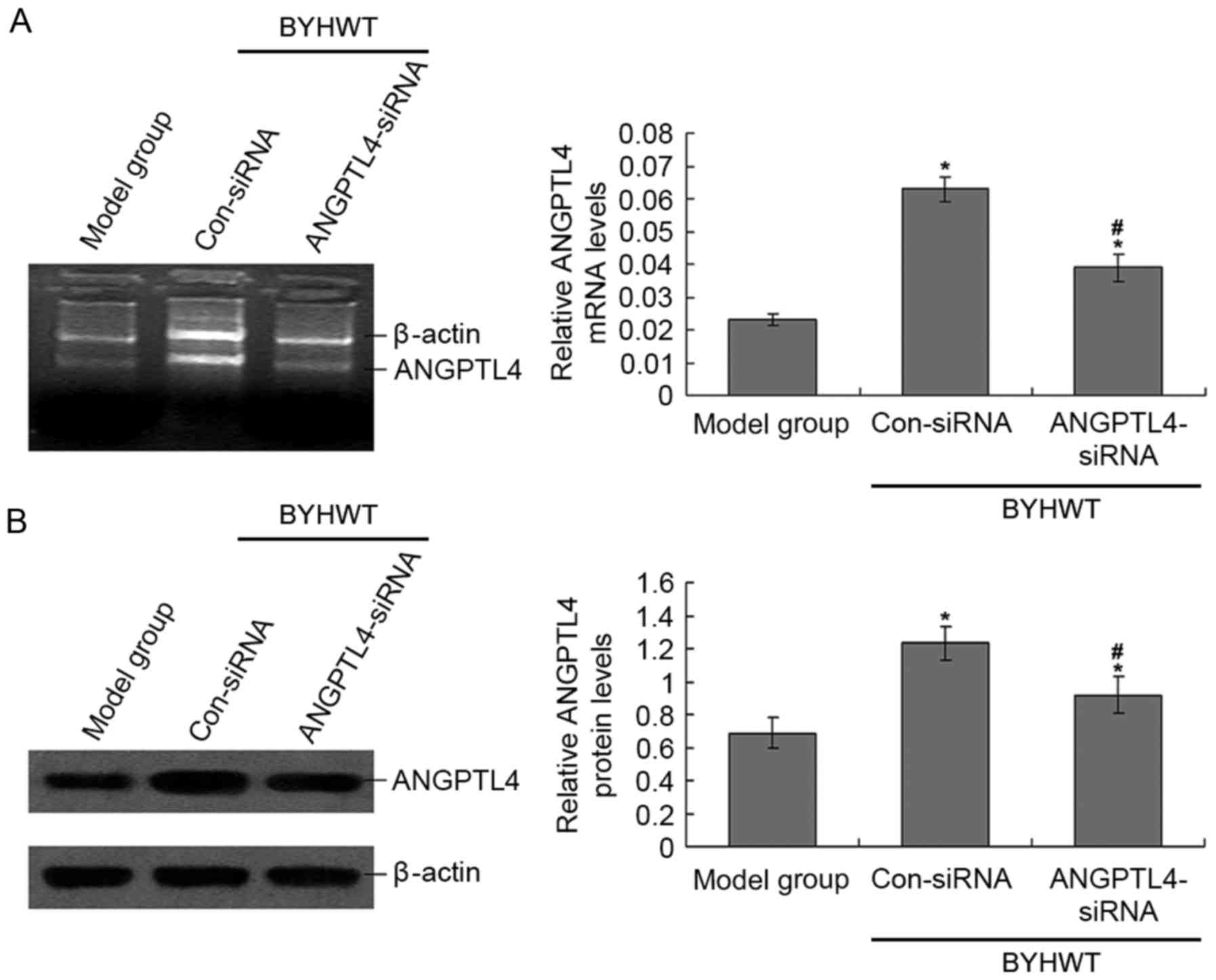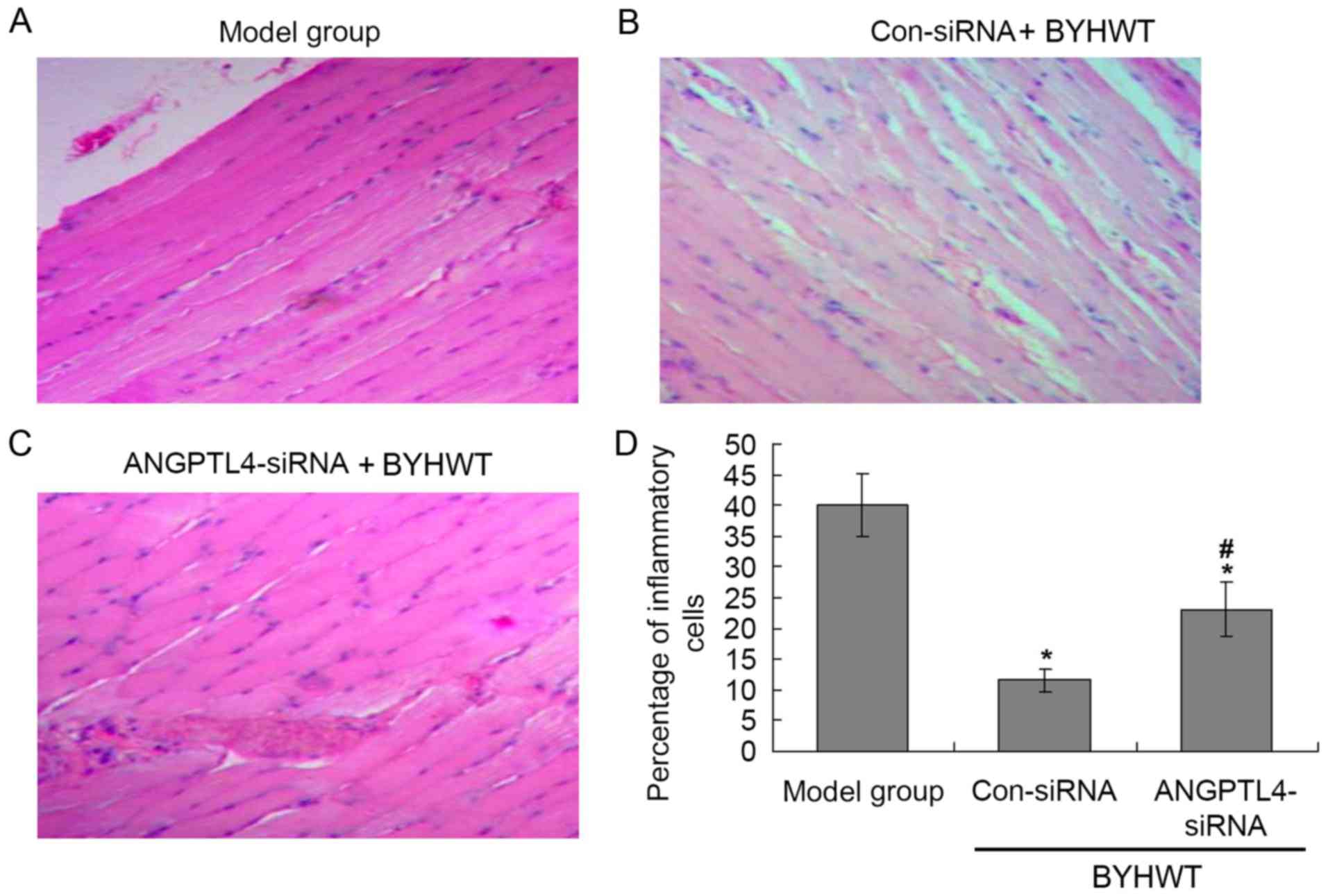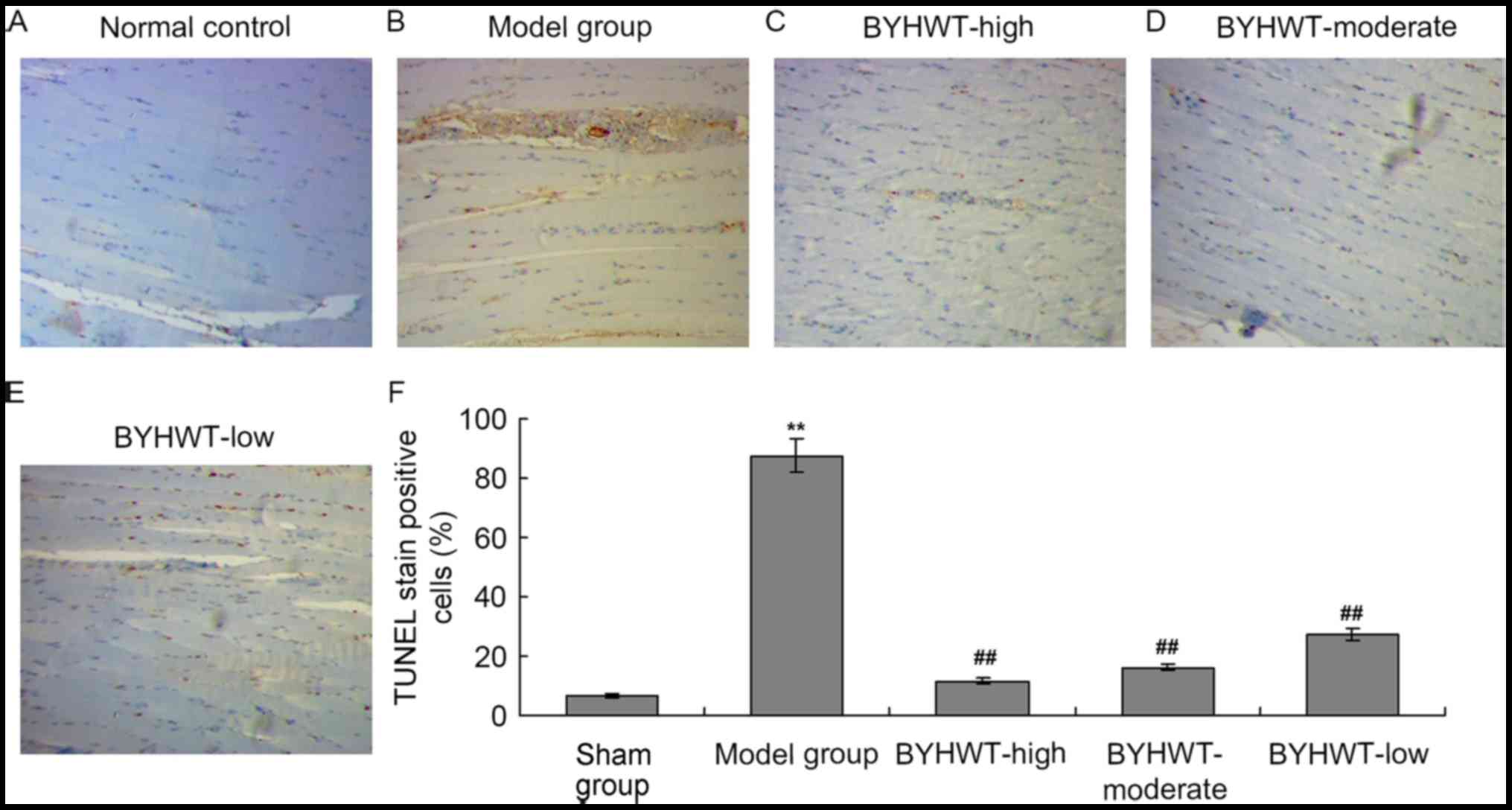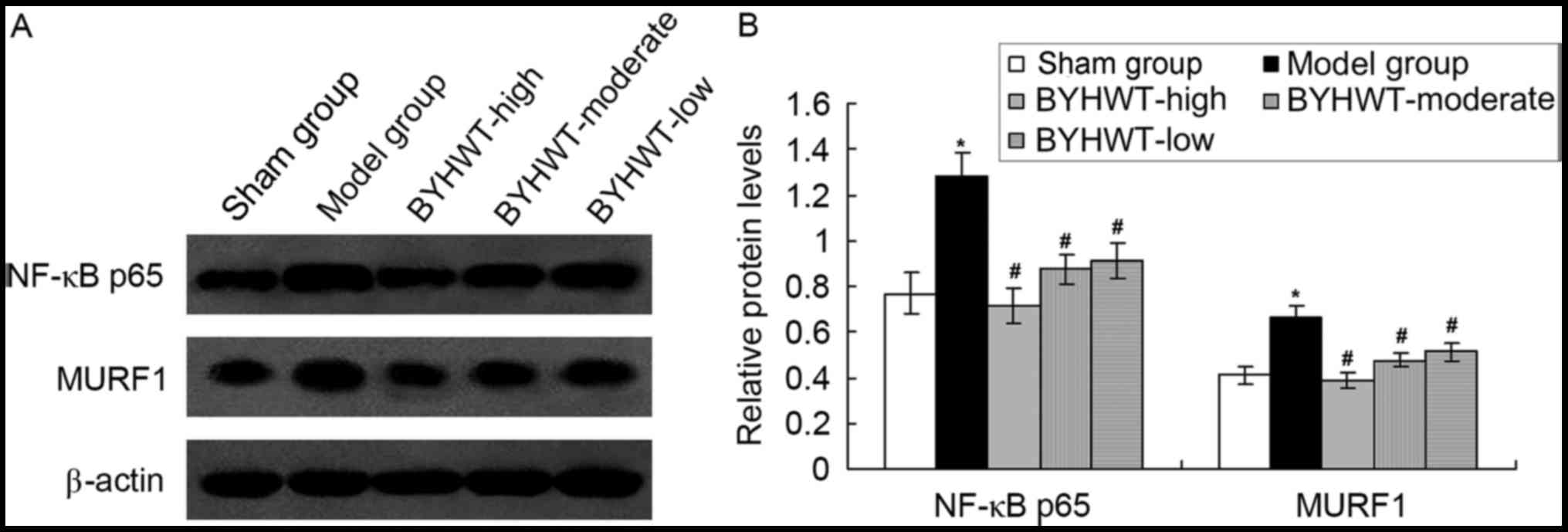|
1
|
Tajrishi MM, Shin J, Hetman M and Kumar A:
DNA methyltransferase 3a and mitogen-activated protein kinase
signaling regulate the expression of fibroblast growth
factor-inducible 14 (Fn14) during denervation-induced skeletal
muscle atrophy. J Biol Chem. 289:19985–19999. 2014. View Article : Google Scholar : PubMed/NCBI
|
|
2
|
Bongers KS, Fox DK, Ebert SM, Kunkel SD,
Dyle MC, Bullard SA, Dierdorff JM and Adams CM: Skeletal muscle
denervation causes skeletal muscle atrophy through a pathway that
involves both Gadd45a and HDAC4. Am J Physiol Endocrinol Metab.
305:E907–E915. 2013. View Article : Google Scholar : PubMed/NCBI
|
|
3
|
Nagpal P, Plant PJ, Correa J, Bain A,
Takeda M, Kawabe H, Rotin D, Bain JR and Batt JA: The ubiquitin
ligase Nedd4-1 participates in denervation-induced skeletal muscle
atrophy in mice. PLoS One. 7:e464272012. View Article : Google Scholar : PubMed/NCBI
|
|
4
|
Batt JA and Bain JR: Tibial nerve
transection-a standardized model for denervation-induced skeletal
muscle atrophy in mice. J Vis Exp. e506572013.PubMed/NCBI
|
|
5
|
Hsieh CH, Jeng SF, Wu CJ, Lu TH, Yang JC,
Chen YC, Lin CJ and Rau CS: Altered expression of the microRNAS and
their potential target genes in the soleus muscle after peripheral
denervation and reinnervation in rats. J Trauma. 70:472–480. 2011.
View Article : Google Scholar : PubMed/NCBI
|
|
6
|
Livak KJ and Schmittgen TD: Analysis of
relative gene expression data using real-time quantitative PCR and
the 2(-Delta Delta C(T)) method. Methods. 25:402–408. 2001.
View Article : Google Scholar : PubMed/NCBI
|
|
7
|
Li G, Li QS, Li WB, Wei J, Chang WK, Chen
Z, Qiao HY, Jia YW, Tian JH and Liang BS: miRNA targeted signaling
pathway in the early stage of denervated fast and slow muscle
atrophy. Neural Regen Res. 11:1293–1303. 2016. View Article : Google Scholar : PubMed/NCBI
|
|
8
|
van der Kolk BW, Goossens GH, Jocken JW,
Kersten S and Blaak EE: Angiopoietin-like protein 4 and
postprandial skeletal muscle lipid metabolism in overweight and
obese prediabetics. J Clin Endocrinol Metab. 101:2332–2339. 2016.
View Article : Google Scholar : PubMed/NCBI
|
|
9
|
Feingold KR, Shigenaga JK, Cross AS, Moser
A and Grunfeld C: Angiopoietin like protein 4 expression is
decreased in activated macrophages. Biochem Biophys Res Commun.
421:612–615. 2012. View Article : Google Scholar : PubMed/NCBI
|
|
10
|
Du D: Treatment of prolapse of lumbar
intervertebral disc by tuina massotherapy combined with oral
administration of buyang huanwu tang-a reprot of 75 cases. J Tradit
Chin Med. 27:43–45. 2007.PubMed/NCBI
|
|
11
|
Guo ZP, Huang MN, Liu AQ, Yuan YJ, Zhao JB
and Mei XF: Buyang Huanwu decoction up-regulates Notch 1 gene
expression in injured spinal cord. Neural Regen Res. 10:1321–1323.
2015. View Article : Google Scholar : PubMed/NCBI
|
|
12
|
Tiscornia G, Singer O, Ikawa M and Verma
IM: A general method for gene knockdown in mice by using lentiviral
vectors expressing small interfering RNA. Proc Natl Acad Sci USA.
100:pp. 1844–1848. 2003; View Article : Google Scholar : PubMed/NCBI
|
|
13
|
Tiscornia G, Singer O and Verma IM: Design
and cloning of lentiviral vectors expressing small interfering
RNAs. Nat Protoc. 1:234–240. 2006. View Article : Google Scholar : PubMed/NCBI
|
|
14
|
Liu X, Min Y, Gu W, Wang Y and Tian Y:
Buyanghuanwu Tang therapy for neonatal rats with hypoxic ischemic
encephalopathy. Int J Clin Exp Med. 8:18448–18454. 2015.PubMed/NCBI
|
|
15
|
Jinglong T, Weijuan G, Jun L, Tao Q,
Hongbo Z and Shasha L: The molecular and electrophysiological
mechanism of buyanghuanwu decoction in learning and memory ability
of vascular dementia rats. Brain Res Bull. 99:13–18. 2013.
View Article : Google Scholar : PubMed/NCBI
|
|
16
|
Staiger H, Haas C, Machann J, Werner R,
Weisser M, Schick F, Machicao F, Stefan N, Fritsche A and Häring
HU: Muscle-derived angiopoietin-like protein 4 is induced by fatty
acids via peroxisome proliferator-activated receptor (PPAR)-delta
and is of metabolic relevance in humans. Diabetes. 58:579–589.
2009. View Article : Google Scholar : PubMed/NCBI
|
|
17
|
Stapleton CM, Joo JH, Kim YS, Liao G,
Panettieri RA Jr and Jetten AM: Induction of ANGPTL4 expression in
human airway smooth muscle cells by PMA through activation of PKC
and MAPK pathways. Exp Cell Res. 316:507–516. 2010. View Article : Google Scholar : PubMed/NCBI
|
|
18
|
Chen HX, Tang SP, Gao FT, Xu JL, Jiang XP,
Cao J, Fu GB, Sun K, Liu SZ and Shi W: Fibrosis, adipogenesis, and
muscle atrophy in congenital muscular torticollis. Medicine
(Baltimore). 93:e1382014. View Article : Google Scholar : PubMed/NCBI
|
|
19
|
Ohnishi Y, Iwatsuki K, Shinzawa K, Nakai
Y, Ishihara M and Yoshimine T: Disuse muscle atrophy exacerbates
motor neuronal degeneration caudal to the site of spinal cord
injury. Neuroreport. 23:157–161. 2012. View Article : Google Scholar : PubMed/NCBI
|
|
20
|
Ohyama K, Koike H, Katsuno M, Takahashi M,
Hashimoto R, Kawagashira Y, Iijima M, Adachi H, Watanabe H and
Sobue G: Muscle atrophy in chronic inflammatory demyelinating
polyneuropathy: A computed tomography assessment. Eur J Neurol.
21:1002–1010. 2014. View Article : Google Scholar : PubMed/NCBI
|
|
21
|
Meneses C, Morales MG, Abrigo J, Simon F,
Brandan E and Cabello-Verrugio C: The angiotensin-(1–7)/Mas axis
reduces myonuclear apoptosis during recovery from angiotensin
II-induced skeletal muscle atrophy in mice. Pflugers Arch.
467:1975–1984. 2015. View Article : Google Scholar : PubMed/NCBI
|
|
22
|
Bargiela A, Cerro-Herreros E,
Fernandez-Costa JM, Vilchez JJ, Llamusi B and Artero R: Increased
autophagy and apoptosis contribute to muscle atrophy in a myotonic
dystrophy type 1 Drosophila model. Dis Model Mech. 8:679–690. 2015.
View Article : Google Scholar : PubMed/NCBI
|
|
23
|
Bodine SC, Latres E, Baumhueter S, Lai VK,
Nunez L, Clarke BA, Poueymirou WT, Panaro FJ, Na E, Dharmarajan K,
et al: Identification of ubiquitin ligases required for skeletal
muscle atrophy. Science. 294:1704–1708. 2001. View Article : Google Scholar : PubMed/NCBI
|
|
24
|
Mittal A, Bhatnagar S and Kumar A,
Lach-Trifilieff E, Wauters S, Li H, Makonchuk DY, Glass DJ and
Kumar A: The TWEAK-Fn14 system is a critical regulator of
denervation-induced skeletal muscle atrophy in mice. J Cell Biol.
188:833–849. 2010. View Article : Google Scholar : PubMed/NCBI
|
|
25
|
Cai D, Frantz JD, Tawa NE Jr, Melendez PA,
Oh BC, Lidov HG, Hasselgren PO, Frontera WR, Lee J, Glass DJ and
Shoelson SE: IKKbeta/NF-kappaB activation causes severe muscle
wasting in mice. Cell. 119:285–298. 2004. View Article : Google Scholar : PubMed/NCBI
|
|
26
|
Mourkioti F, Kratsios P, Luedde T, Song
YH, Delafontaine P, Adami R, Parente V, Bottinelli R, Pasparakis M
and Rosenthal N: Targeted ablation of IKK2 improves skeletal muscle
strength, maintains mass, and promotes regeneration. J Clin Invest.
116:2945–2954. 2006. View
Article : Google Scholar : PubMed/NCBI
|
|
27
|
Macpherson PC, Wang X and Goldman D:
Myogenin regulates denervation-dependent muscle atrophy in mouse
soleus muscle. J Cell Biochem. 112:2149–2159. 2011. View Article : Google Scholar : PubMed/NCBI
|














